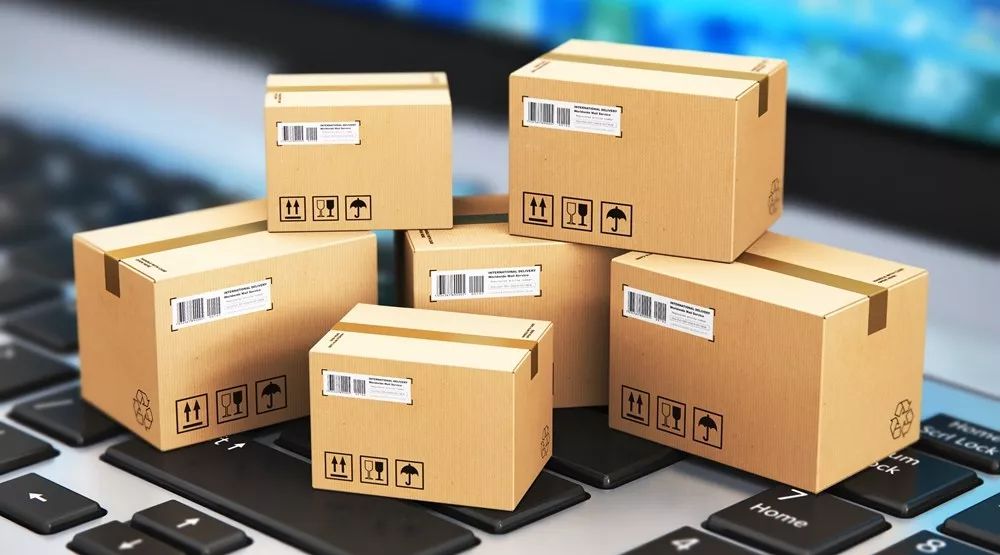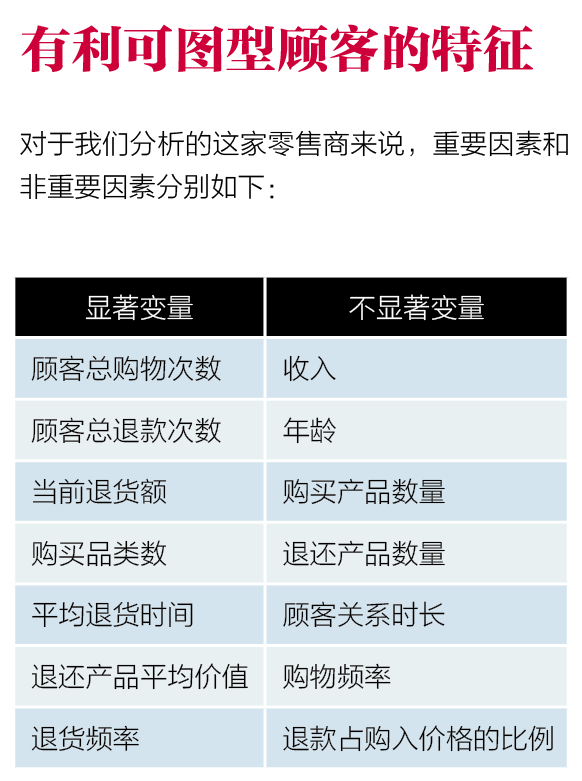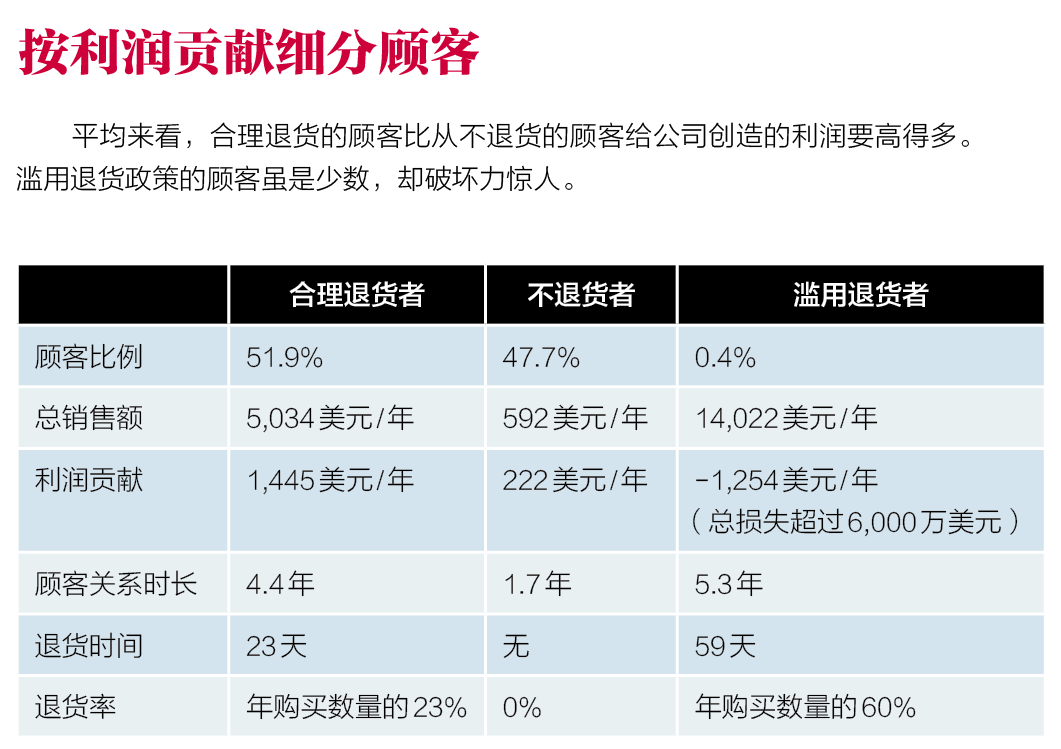Managing returns properly is a science.
Editor’s note: This article is from WeChat public account “ New retail business review ” (ID: xinlingshou1001), author James Abby, etc.

American outdoor product brand LL Bean has been established for 100 years and has been Enforce extremely free returns policies-returns are neither time limited nor require receipts. You get a full refund on shoes bought decades ago. But many people abuse the return policy, pick things up from the trash, or buy second-hand goods on eBay.
In the past five years, these worthless returns have eaten the company’s $ 50 million a year, about 30% of annual profits.
So in February 2018, the company announced a new deal: Only products purchased within one year can be returned. As soon as the New Deal was introduced, hissing and even triggered a class action lawsuit, once the loyal customers said they were hurt, and never bought anything from this company: the person who abused the return policy was not me, why should I lie down?
Some customers said that the unique L.L. Bean was gone, and there was just one more general store in the world.
L.L. Bean is not a case. Best Buy, American outdoor goods chain REI, American clothing brand Land’s End, and Costco have implemented return restrictions, such as “restocking fees”, shortening the time allowed for returns, requiring the original receipt, etc. . Merchants that still implement free returns policies also exist, but the number is decreasing.
Regardless of whether these companies’ return policies are tight or loose, their common point is that they treat all customers equally, treat all customers who are loyal and compliant, and treat customers who have no choice but to ignore the huge differences in customer behavior.
Fortunately, with the emergence of some new tools and technologies, companies canSegmentation, by analyzing customer historical behavior, implement differentiated return policies.
Recently, we analyzed customer data from a major high-end retailer in the United States and identified transaction patterns for customers most likely to abuse return policies.
Our forecasting model is very effective for this company, of course, another company may fail-in other circumstances, the factors of influence may be different, or even the same factors will have different weights.
However, to identify and manage the customers who are most likely to abuse the return policy, there are some general methods that can be used, and these methods have broad guiding significance, so we share with you here, hoping to help retailers reasonably Manage returns, guarantee profits, and provide a positive customer experience.

Find customers who make the most profit for you The customers who make the least profit
Returns are a big deal. In 2017, the return value reached US $ 351 billion. Our analysis shows that if there is a hypothetical “customer return company”, it will rank second in the Fortune 500, behind Walmart.
On average, 10% of items sold in US stores will be returned. Unfortunately, many returns can no longer be put back on the shelf, and it takes a lot of time for employees to decide which items can be put back on the shelf before being properly processed.
After receiving the returns, employees will sort them, repair them, repack them, and put them back on the shelves if they are still valuable.
Return fraud and abuse exacerbate the problem, with US retailers paying $ 23 billion a year for it-equivalent to the combined profits of the top three US retailers Wal-Mart, Opener and Home Depot.
There are many forms of return abuse, and some are quite creative. For example, customers will buy a big-screen TV to watch the Super Bowl, or buy expensive clothes for special events, and return it after use. These behaviors have been dubbed by various names, including retail leasing, leasing, personal collections of clothing, and immediate purchase and return.
Some customers will buy something that they wo n’t use at all, but benefit from returning it.
For example, customers can use credit card travel rewards to make purchases, then return for cash, accumulate air miles or hotel points, but merchants have to pay transaction fees. alsoOne way to make money is that when someone is shopping at a discount, they return their receipt and claim a full refund. The simplest form of abuse of returning goods is to return the money in exchange for cash.
The key to combating return fraud is to identify the most likely malicious returners and restrict them only severely.
The ideal situation is to limit them before their next transaction. For these customers, the company can charge restocking fees or reject certain returns. In this way, the company can retain a generous return policy for loyal customers who reasonably return.
This method focuses on the lifetime value of the customer, and we find that it can create benefits for the company more than a one-size-fits-all or loose policy.
It’s also much easier from a PR point of view-if the company can prove that it is cracking down on problematic return customers, it won’t suffer a PR crisis like L.L. Bean because of the implementation of comprehensive restrictions.
The retailer we studied has more than 100 physical stores, plus discount stores, as well as catalog sales and online sales channels. In total, we examined more than one million customers recorded over seven years, more than 75 million transactions, sales totaling $ 2.9 billion, and returns amounting to $ 466 million.
After studying the data, we found that a total of 7 key variables together explain why the variance of the overall customer profit contribution reached an astonishing 94%.

Interestingly, demographic characteristics such as age and income are not significant, so we did not include them in the prediction model. Transaction-related data such as total purchases, number of categories purchased, and average return time are much more important.
By identifying customers whose lifetime contribution is negative, we can predict which customers are most likely to engage in returns fraud in the future. We found that the prediction model only needs to observe 5 transactions, and the accuracy rate can be as high as 99.96%. Observing 10 transactions and above, the accuracy rate is improved to 99.98%.
We segment customers into three categories: reasonable returners , non-returners , and abuse of returners (i.e. frequency of returns and Customers whose time has caused the company to incur financial losses).

On average, reasonable returners contribute $ 1,445 to the company’s profit each year—the largest customer group in our research. They value the return options offered by retailers, with an average return rate of 23%.
The number of abusive returners is small, but the damage is huge: only 0.4% of customers belong to this category, the average return rate is 60%, but the company loses a total of 60 million US dollars each year. Since the average return time for these customers is two months, the value of the product at the time of return is already much lower than the value at the time of purchase, especially seasonal goods.
tailored return policy
By analyzing transaction behavior and segmenting customers based on profit contributions, retailers can understand when return restrictions should be implemented and when they are not required.
Of course, for those customers who like the flexible return policy and can make a significant contribution to the company’s profit, the company still needs to give them the maximum freedom of return, and never ignore it in order to control the customers who love the cheap To the needs of these quality customers.
In this way, the company is more likely to increase customer satisfaction, increase loyalty, and promote customers’ long-lasting purchases in the future.
There are several ways to adjust your return policy. A simple method is to clearly state in the return process that returns are ok, but will monitor unreasonable returns. If a customer has a clear history of excessive returns, retailers can directly restrict or reject transactions.
However, Retailers do n’t need to wait for returns to take place—different return policies can be explicitly given at the time of sale. According to the analysis results of the predictive model, retailers can mark over-return customers when they shop, tell them that the return time is limited, and that they will be charged a restocking fee or shipping cost.
In addition, Retailers can charge return rates on product categories that are rapidly depreciating, such as seasonal goods and electronic goods, and shorten the return period.
Although there are multiple mechanisms available for the company, the retailer we analyzed has begun to directly reject their return requests for customers who abuse the return policy.
The retailer decided to launch this new policy during our research period, in part to comply with the industry’s trend to implement strict return policies.

We also identified potential opportunities for non-return customers. Our data shows that compared with those who return goods regularly from time to time, customers who do not return goods have a much smaller purchase and a much smaller contribution to the company’s profits.
But the company may find ways to change the behavior of these customers, such as attracting them to try some samples for free, or even encourage them to buy several similar products at the same time, leave the ones they like after returning home to try, and return the other as soon as possible, or find a way Turn these customers into reasonable return customers, send them coupons or discount coupons when they come to the store to purchase, and can use them in the future when they need to return.
If this doesn’t work, retailers can also give them some incentives to attract them to buy more products-for example, selling certain items at reduced prices, but not allowing returns (they don’t like returning anyway).
A number of online retailers have taken a similar approach, including Jet.com and Walmart Online Store. Although these incentives are still uncommon, they will become more common in the future. Just as return policies will become more stringent for customers who abuse returns, preferential policies will become more favorable for quality customers.
Today, most large retailers have a wealth of data on customer transactions and behaviors, and they can implement flexible return policies for different customers.
Note that we are using a behavioral model, not a population model.
Behavior changes over time. If customer behavior changes due to a customized return policy, companies can continue to recalibrate based on the latest transactions and continue to encourage the customer behavior they want to see.


By analyzing transaction behavior and segmenting customers based on profit contributions, retailers can understand when return restrictions should be implemented and when they are not required.
Of course, for those customers who like the flexible return policy and can make a significant contribution to the company’s profit, the company still needs to give them the maximum freedom of return, and never ignore it in order to control the customers who love the cheap To the needs of these quality customers.
In this way, the company is more likely to increase customer satisfaction, increase loyalty, and promote customers’ long-lasting purchases in the future.
There are several ways to adjust your return policy. A simple method is to clearly state in the return process that returns are ok, but will monitor unreasonable returns. If a customer has a clear history of excessive returns, retailers can directly restrict or reject transactions.
However, Retailers do n’t need to wait for returns to take place—different return policies can be explicitly given at the time of sale. According to the analysis results of the predictive model, retailers can mark over-return customers when they shop, tell them that the return time is limited, and that they will be charged a restocking fee or shipping cost.
In addition, Retailers can charge return rates on product categories that are rapidly depreciating, such as seasonal goods and electronic goods, and shorten the return period.
Although there are multiple mechanisms available for the company, the retailer we analyzed has begun to directly reject their return requests for customers who abuse the return policy.
The retailer decided to launch this new policy during our research period, in part to comply with the industry’s trend to implement strict return policies.

We also identified potential opportunities for non-return customers. Our data shows that compared with those who return goods regularly from time to time, customers who do not return goods have a much smaller purchase and a much smaller contribution to the company’s profits.
But the company may find ways to change the behavior of these customers, such as attracting them to try some samples for free, or even encourage them to buy several similar products at the same time, leave the ones they like after returning home to try, and return the other as soon as possible, or find a way Turn these customers into reasonable return customers, send them coupons or discount coupons when they come to the store to purchase, and can use them in the future when they need to return.
If this doesn’t work, retailers can also give them some incentives to attract them to buy more products-for example, selling certain items at reduced prices, but not allowing returns (they don’t like returning anyway).
A number of online retailers have taken a similar approach, including Jet.com and Walmart Online Store. Although these incentives are still uncommon, they will become more common in the future. Just as return policies will become more stringent for customers who abuse returns, preferential policies will become more favorable for quality customers.
Today, most large retailers have a wealth of data on customer transactions and behaviors, and they can implement flexible return policies for different customers.
Note that we are using a behavioral model, not a population model.
Behavior changes over time. If customer behavior changes due to a customized return policy, companies can continue to recalibrate based on the latest transactions and continue to encourage the customer behavior they want to see.